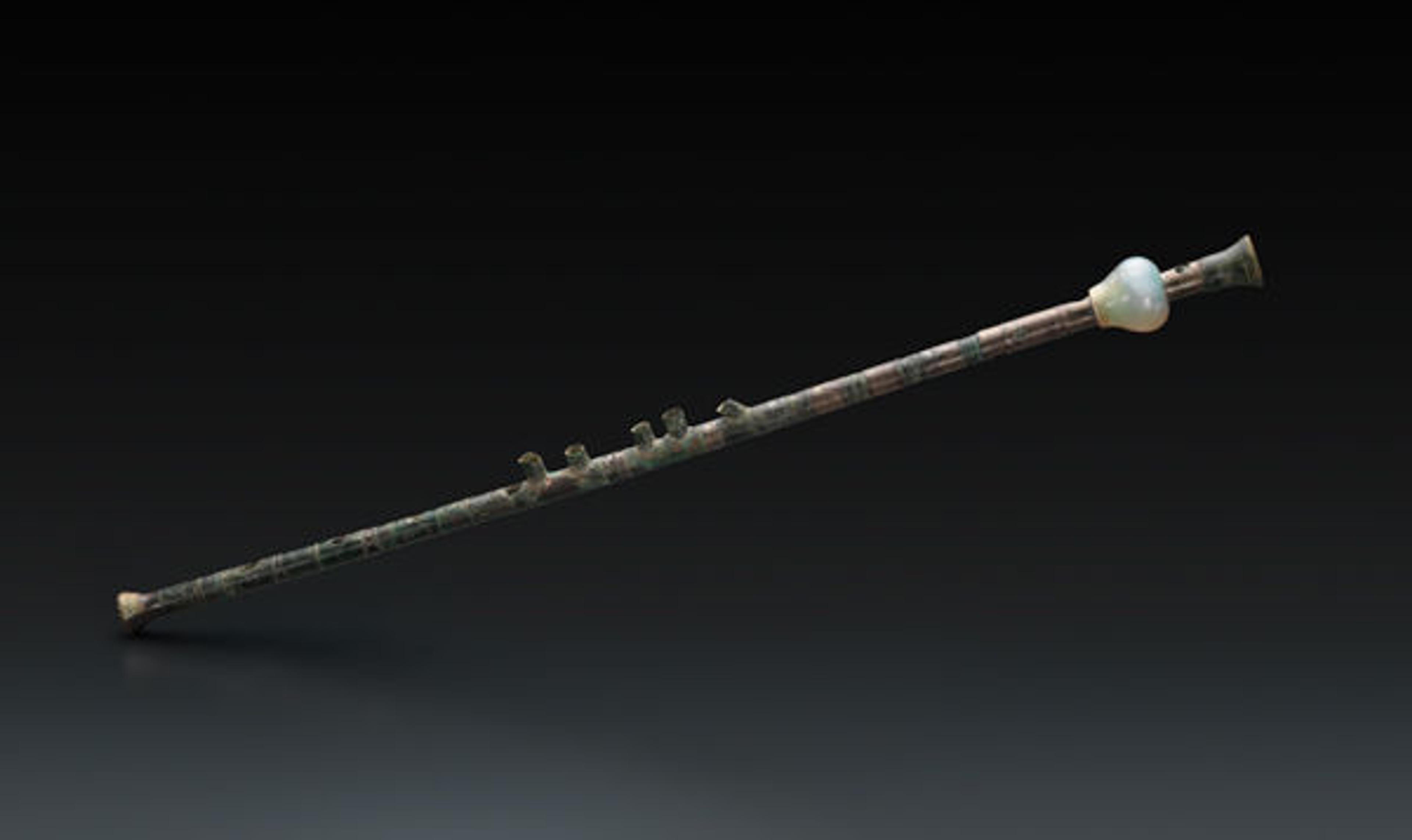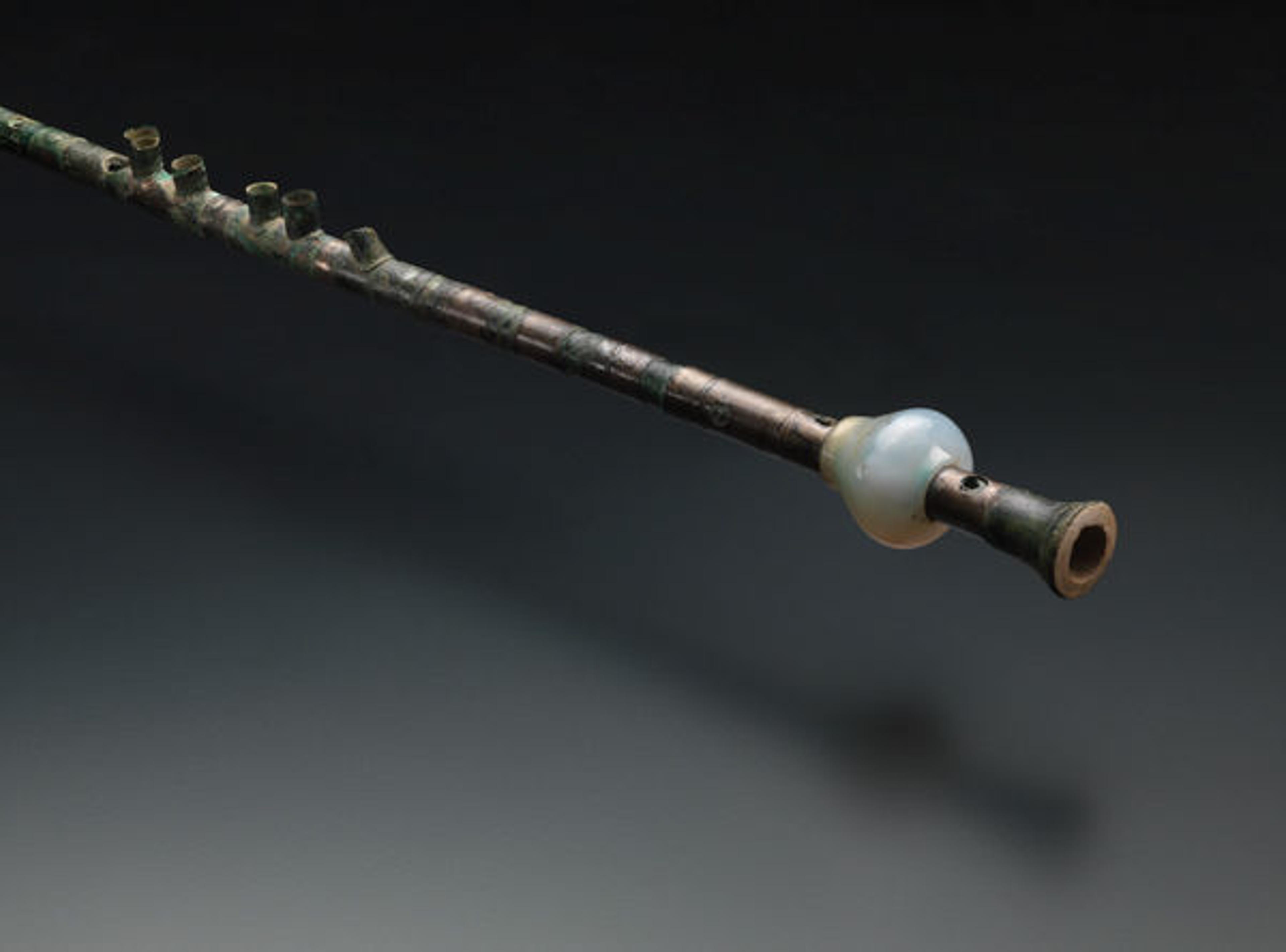
Tibia. Syria, late Roman, ca. 1–500. Ivory, silver, chalcedony; L. 23 1/8 in. (58.6 cm); Diam. at end 2.5 x L. 58.6 cm (1 x 23 1/16 in.). The Metropolitan Museum of Art, New York, Purchase, Rogers Fund, 1958 (58.40)
«An extraordinarily early and rare wind instrument in the Museum's collection is a tibia from the ancient Mediterranean world. Music was abundant in the Roman Republic, to which Syria was annexed as a province, and the tibia, a double-reed instrument, accompanied many events in Etruscan and Roman daily life. Its ubiquitous depictions in mosaics, pottery, and sarcophagi portray tibia players in wedding processions, entertaining at formal meals, and providing music for laborers. Ovid wrote that the tibia "sang" in temples, at gaming events, and during funeral rites. Both Ovid and Livy recounted a legendary strike by tibia players, which underscores the instrument's great importance.»
This example reveals that the design, acoustics, and performance technique of the tibia were highly sophisticated. The instrument was sounded with a double reed, and two pipes would have been played simultaneously. The small tubes, or chimneys, projecting from the side of this instrument and the rings encircling its body were likely part of a complex mechanical system designed to increase the number of notes and modal scales that could be played on a single instrument.

Tibia (detail). Syria, late Roman, ca. 1–500. Ivory, silver, chalcedony; L. 23 1/8 in. (58.6 cm); Diam. at end 2.5 x L. 58.6 cm (1 x 23 1/16 in.). The Metropolitan Museum of Art, New York, Purchase, Rogers Fund, 1958 (58.40)